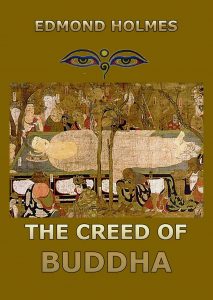The Creed of Buddha – Edmond Holmes
The author of ” The Creed of Buddha ” can safely say that no better exposition of Buddhism has ever been given to the world. It is sympathetic, it is scholarly, and it is complete. Between east and west, says the author, a gulf has been fixed, a gulf created by basic ideas, hollowed out by the erosive action of speculative thought. The Western mind takes for granted the reality of outward things. The Eastern mind attributes the only reality to the soul. All else is maya, illusion. And there are very few that can bridge thatgulf.In the East, where the soul is the supreme and fundamental reality, the identification of God with the world-soul, or soul of universal Mature, is the outcome of a movement of thought which is at once natural and logical. This divine soul is the only real existence: by comparison with it all outward things are shadows, and all inward things, so far as they hold aloof from the all-embracing consciousness, are dreams. The worship of the supernatural, such as is to be found in Christianity, often ends in the despiritualization of Nature. which becomes merely the world without and therefore opposed to the Supernatural, which becomes the dwelling place of God .
Format: Paperback.
The Creed of Buddha.
ISBN: 9783849672669.
Available at amazon.com and other venues.
Biography of Edmond Holmes (from wikipedia.com)
Holmes was born in Moycashel, County Westmeath, Ireland. His The Creed of the Buddha (1908) is well known; he also wrote a pantheist text All is One: A Plea for a Higher Pantheism.
He was also a schools inspector, rising to become chief inspector for elementary schools in 1905. He resigned in 1911, over a confidential memorandum criticising school inspectors who had formerly been elementary school teachers. This angered the teachers’ union and it led to the downfall of Robert Morant the permanent secretary to the Board of Education when it became public. Holmes subsequent writings on education are taken as an early statement of “progressive” and “child-centred” positions, and are still cited. Later works come close to theosophy. For example, even a 1914 book review of his In Defence of What Might Be describes it as “pregnant with possibilities for the untrammeled soul of the growing child. A draft of fresh air into static pedagogy.”
Words from his The Triumph of Love were set to music by the composer Charles Villiers Stanford, a friend.
(The text of the last section was taken from a Wikipedia entry and is available under the the Creative Commons Attribution-ShareAlike License.)
Publisher’s Note: This book is printed and distributed by Createspace a DBA of On-Demand Publishing LLC and is typically not available anywhere else than in stores owned and operated by Amazon or Createspace.

